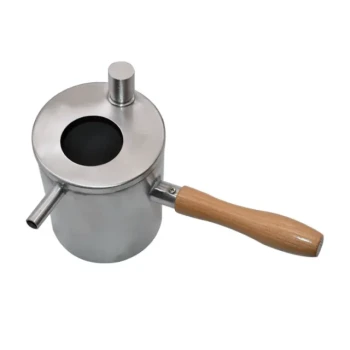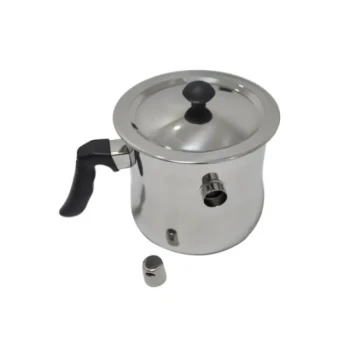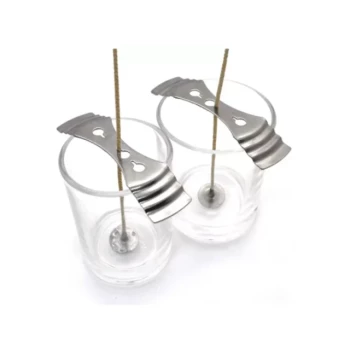As a general benchmark, melting wax for a typical craft project, such as making candles, will often take around 15 minutes. However, this is only an estimate. The actual time can vary significantly based on the type of wax, the amount you are melting, and the specific heating method you employ.
The most critical factor in melting wax is not speed, but control. The primary goal is to melt the wax slowly and evenly to a target temperature while avoiding the significant risks of overheating.
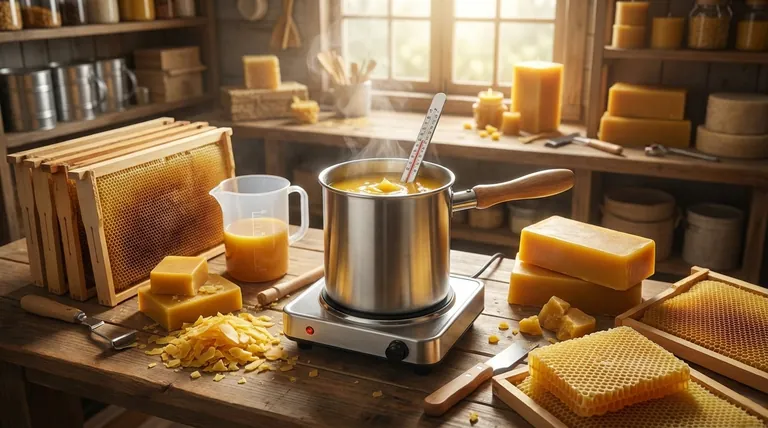
Key Factors That Influence Melting Time
The "15-minute" rule is a helpful starting point, but several variables will directly impact how long you'll be waiting. Understanding them is key to a predictable and safe process.
Type and Form of Wax
Different waxes have different melting points. Natural waxes like soy wax typically melt at lower temperatures (around 120-180°F or 49-82°C), while paraffin wax has a broader range and beeswax melts at a higher point (around 145°F or 63°C).
The form also matters. Wax flakes, pastilles, or shavings have more surface area and will melt much faster than a solid block of the same weight.
Quantity of Wax
The relationship is simple: more wax requires more energy and therefore more time to melt. A small batch for a few tealights might melt in 5-10 minutes, whereas a large pot for multiple pillar candles could easily take 20-30 minutes or more.
Heating Method and Temperature
This is the most significant factor. Using high, direct heat will melt wax quickly, but it is dangerous and can damage the wax. A gentle, indirect heat source is strongly recommended, even though it is slower.
Best Practices for Melting Wax Safely
Your technique is more important than your timer. A controlled melt is a safe melt and produces a better final product. The goal is to gently bring the wax to a liquid state and then to the correct temperature for adding dyes or fragrance.
Always Use a Double Boiler
The safest and most recommended method is a double boiler. This setup uses steam to provide gentle, indirect heat, which prevents scorching and drastically reduces the risk of fire.
If you don't have a dedicated double boiler, you can easily create one by placing a smaller pouring pot inside a larger saucepan partially filled with water. Never let the inner pot touch the bottom of the outer pan.
Monitor the Temperature Constantly
Do not guess. Use a candy thermometer or a dedicated wax thermometer to track the temperature. Each wax has a specific temperature for adding fragrance oil (too hot and the scent "burns off," too cool and it won't bind properly).
Stir Gently and Consistently
As the wax begins to melt, stir it gently with a silicone or metal utensil. This breaks up solid chunks and distributes heat evenly, ensuring a smooth and consistent melt without hot spots.
Understanding the Risks and Pitfalls
Rushing the process introduces significant risks. Speed is the enemy of safety and quality when working with hot wax.
The Danger of Overheating
Every wax has a flashpoint—the temperature at which its vapors can ignite if exposed to a flame. Overheating wax is a serious fire hazard. Furthermore, it can ruin the wax, causing discoloration and negatively impacting its ability to hold fragrance.
Never Leave Melting Wax Unattended
A pot of melting wax is a potential hazard. It can overheat or spill in a matter of moments. Always stay present and focused throughout the entire melting process.
Avoid Direct Heat and Microwaves
Placing a pot of wax directly on a stovetop burner creates intense hot spots, which can easily scorch the wax and create a fire risk.
Similarly, microwaving wax is not recommended. It heats unevenly, making it difficult to control the temperature and creating a risk of superheated pockets that can flash or cause severe burns.
Making the Right Choice for Your Goal
Your approach should be dictated by your priority, whether that is absolute safety or efficient production for a larger project.
- If your primary focus is safety and quality (especially for beginners): Use a double boiler, melt the wax slowly, and monitor the temperature with a thermometer, regardless of how long it takes.
- If your primary focus is melting large batches efficiently: Invest in a dedicated, large-capacity wax melter with precise temperature controls to ensure both safety and consistency.
- If your primary focus is a very small, quick craft: A small amount of wax flakes in a double boiler will still be your fastest and safest method, likely taking less than 10 minutes.
Ultimately, patience is the most valuable tool in this process, ensuring both your safety and the quality of your finished product.
Summary Table:
| Factor | Impact on Melting Time | Key Consideration |
|---|---|---|
| Wax Type | Beeswax melts slower than soy or paraffin. | Know your wax's melting point. |
| Wax Form | Flakes melt faster than solid blocks. | Increase surface area for speed. |
| Quantity | More wax = longer melting time. | Scale your time expectations. |
| Heating Method | Double boiler is safest but slower than direct heat. | Prioritize safety over speed. |
Ready to Scale Your Beekeeping or Candle-Making Operation?
Melting wax efficiently and safely is crucial for quality results. For commercial apiaries and distributors, having the right equipment makes all the difference. HONESTBEE supplies professional-grade beekeeping supplies and equipment, including high-capacity wax melters designed for safety, precision, and efficiency in wholesale operations.
Let us help you optimize your process. Contact our experts today to discuss your equipment needs and wholesale pricing!
Visual Guide
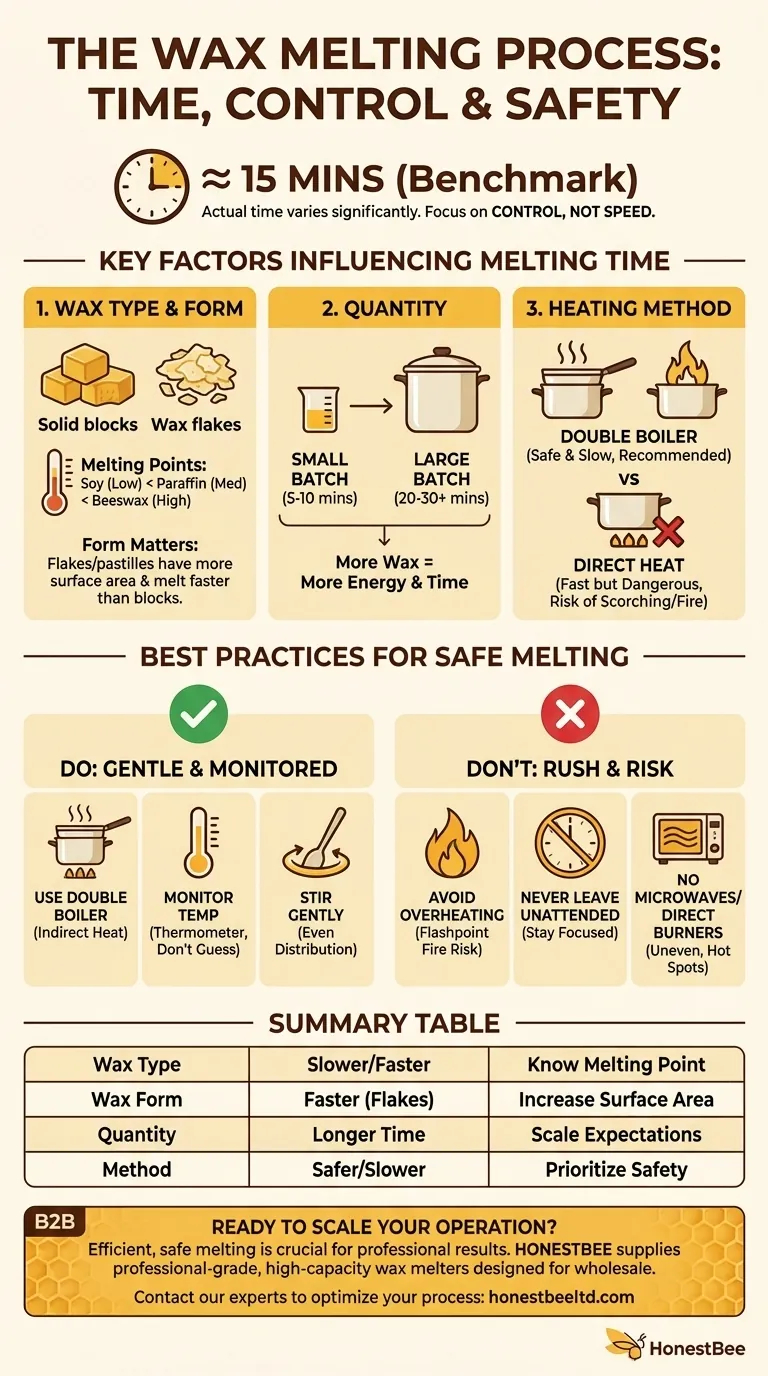
Related Products
- Professional Stainless Steel Wax Melter for Beekeeping and Crafts
- Beeswax Melter for Candle Making Honey Bee Wax Melter
- Steam Beeswax Melter Wax Warmer for Wax Processing
- Electric Beeswax Flat Sheet Machine with Operating Tray for Wax Processing
- Stainless Steel Manual Honey Press with Guard for Pressing Honey and Wax
People Also Ask
- What is the flash point of beeswax, and why is it important? Essential Safety Guide for Beekeepers
- What is the flashpoint of beeswax? Essential Safety and Quality Tips for Beekeepers
- What are wax melters used for? Unlock Efficient Wax Processing for Your Business
- How do you pour melted beeswax into a mold? A Step-by-Step Guide for a Flawless Finish
- What are the safety precautions when working with melted beeswax? Prevent Burns and Fire Hazards
